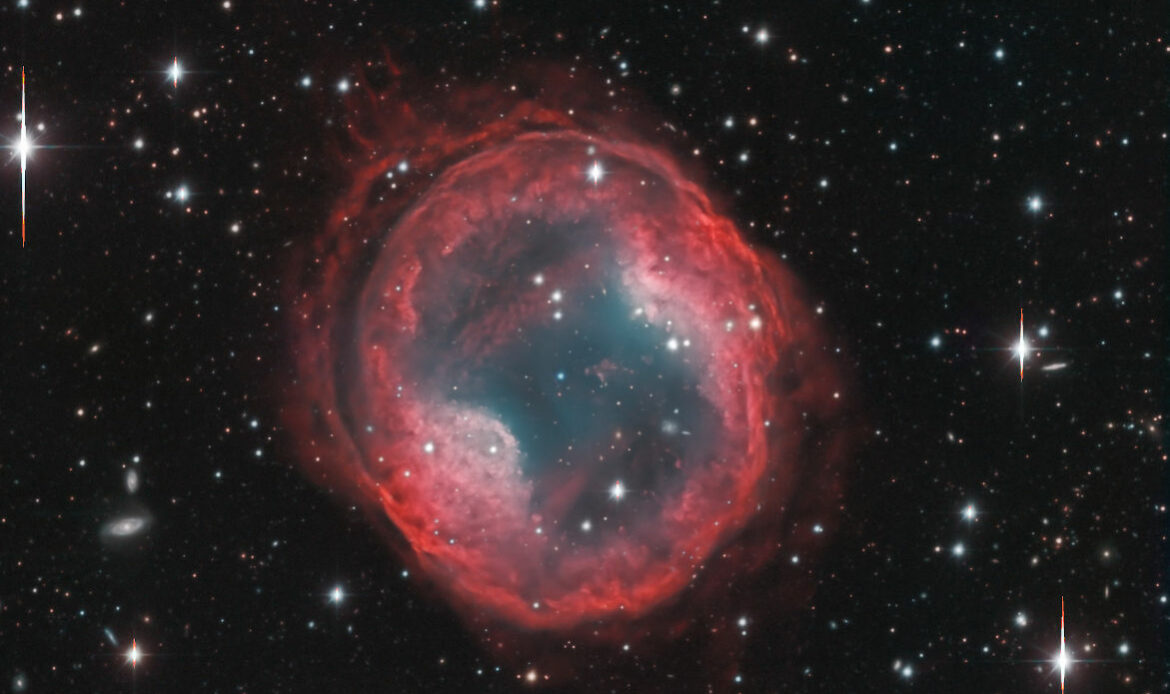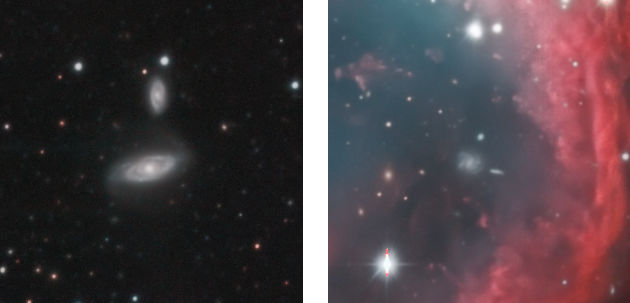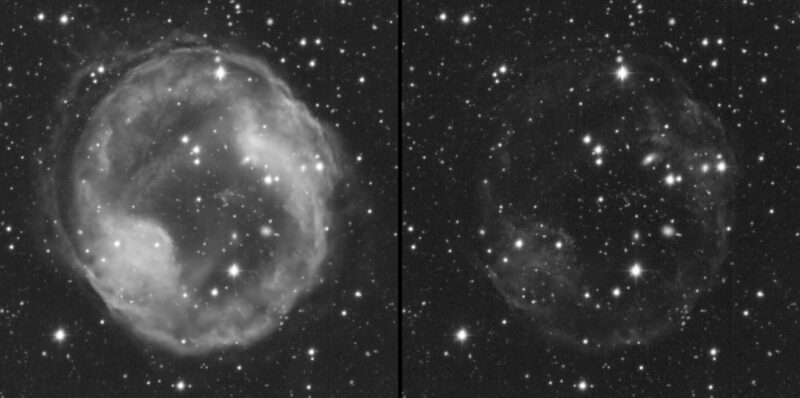Nebula Jones-Emberson 1: gas watermark Versión en español

We present what probably is the best photograph ever obtained of planetary nebula PK164+31.1. A. This object is also known as Jones-Emberson 1 and it is located in the northern sky, in the direction of the little known constellation Lynx. This nebula is difficult to observe with small telescopes due to its low surface brightness. It covers on the sky a width similar to that of a one euro coin placed at a distance of fifteen metres (six arcminutes). Nevertheless, it is a very cute object for astrophotography.
Planetary nebulae represent the final stage in the existence of low-mass stars (those below eight solar masses). During their final energetic breakdown, these objects expel their outer layers towards interstellar space, and this material is ionized and illuminated by the stellar remains left at its centre, a white dwarf. Our own Sun will go through this process in approximately five thousand million years.

A few among the many background galaxies visible in the image, both around the nebula (left) and through it (right)
This image is included in the Documentary Gallery of Astrophotography of Descubre Foundation. It has been possible thanks to the exceptional quality of the sky and the instrumentation at Calar Alto Observatory, linked to a very careful planning of the observations and to a rigorous image processing. Owing to the high quality of the image, minute structural details of the ionisation front are revealed in the form of a watermark made from gas. At the same time, many stars in our galaxy are also seen, as well as a backdrop of distant galaxies, some of them observed through the veil of the nebula itself.

Comparison of a red R-band image of the planetary nebula PK164+31.1 (left), and the same image after subtraction of the narrow-band H-alpha image (right). H-alpha light traces the presence of ionized hydrogen, which is the main constituent of the nebula, and also light from excited nitrogen atoms. Subtracting it renders the nebula almost transparent, and allows us to observe galaxy clusters behind it. The remaining nebular light comes from other excited atomic species emitting in the R-band (600-700 nm window) as, for example, sulphur.
PK164+31.1 lies approximately 1600 light-years away, and its small apparent size translates into a diameter of approximately 3 light-years, a distance similar to that from the Sun to its nearest stellar neighbour, alpha Centauri. Thus, if an astrophographer living in a planet close to PK164+31.1 took an image of our Sun, both ourselves and alpha Centauri would fit within a circle with the apparent size that PK164+31.1 shows to us.
The image has been produced as a result of the collaboration among Descubre Foundation, Calar Alto Observatory, the Documentary School of Astrophotography (DSA) and the Astronomical Observatory of the University of València (OAUV). All data come from the Zeiss reflector of 1.23 m aperture of Calar Alto and they have been processed with PixInsight software. The photograph is a combination of shots taken through the filters R, G, B and H-alpha, with a total integration time of 28 hours (5 hours and 20 minutes for each of the RGB bands, and 12 hours for H-alpha). The field of view spans 15.5 arcminutes (half the apparent diametre of the full Moon). North is up, Eas is left.
Download the images
Image credits: Descubre Foundation / Calar Alto / OAUV / DSA, Vicent Peris (OAUV), Jack Harvey (DSA/SSRO).
Image of planetary nebula PK164+31.1 from the Documentary Gallery of Astrophotograpy of Calar Alto.
Comparison of a red R-band image of the planetary nebula PK164+31.1, and the same image after subtraction of the narrow-band H-alpha image.
Enlargement zooming into just a few of the many background galaxies visible around and even through the nebula.
Astronomy Picture of the Day (APOD) October 30th 2012
Text: David Galadí-Enríquez

